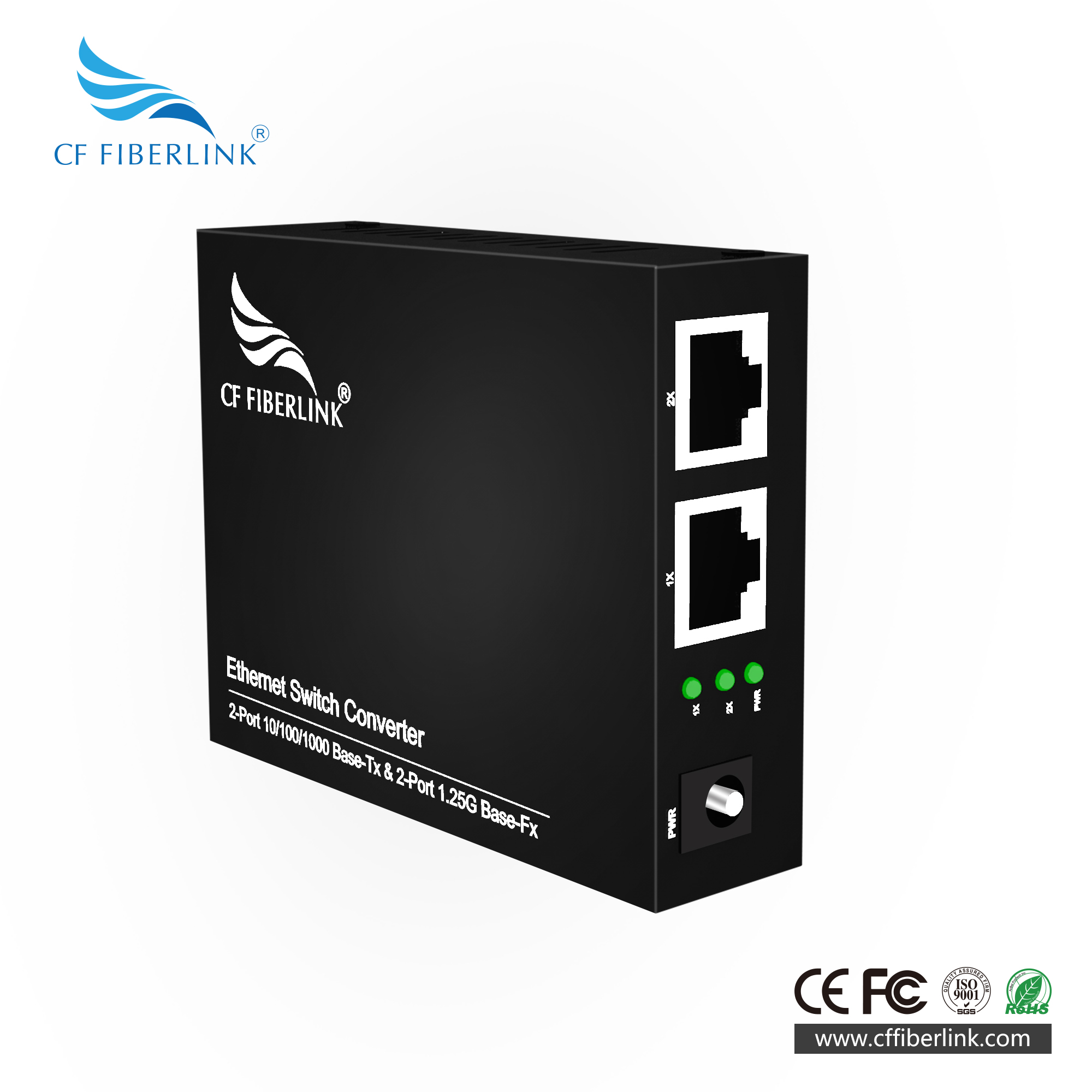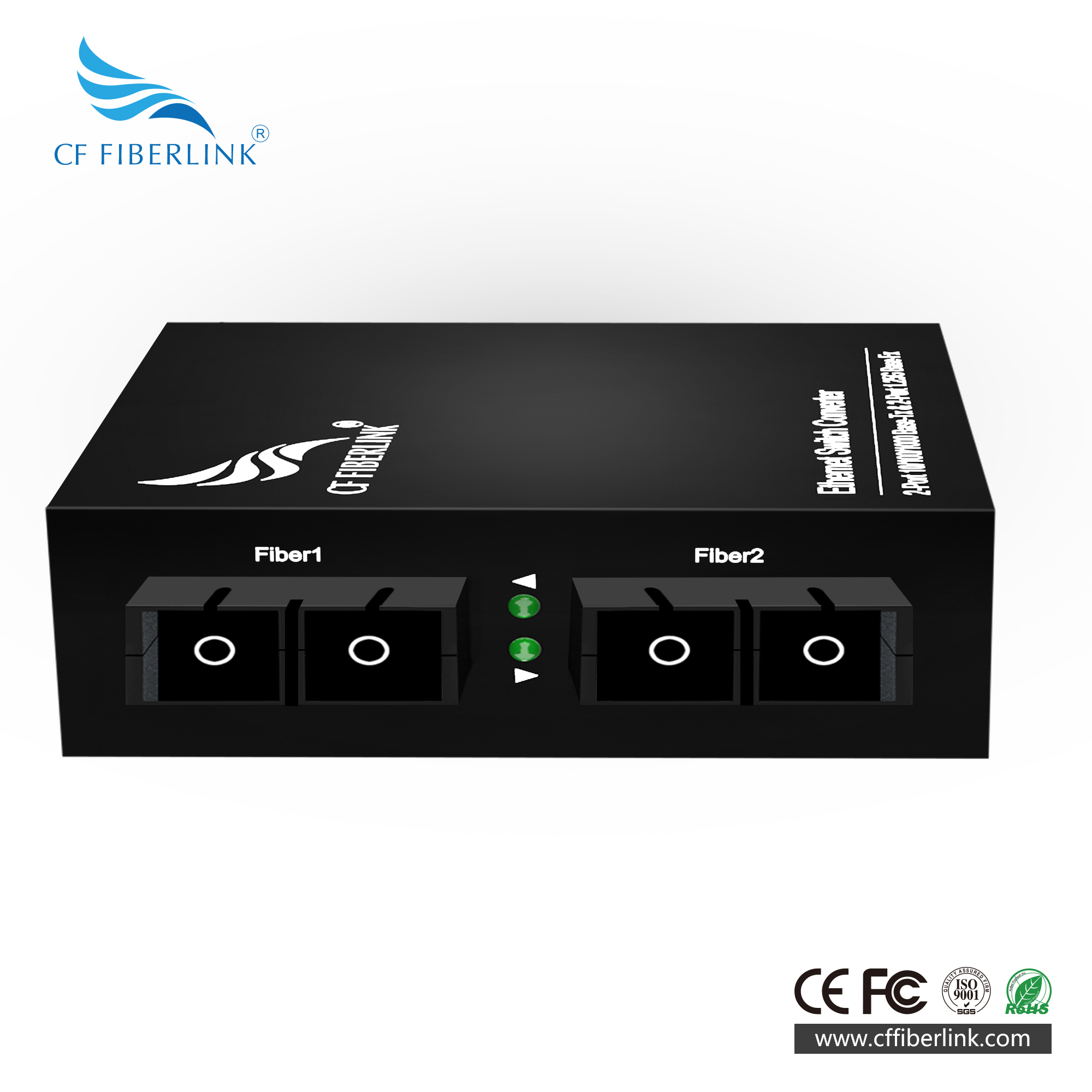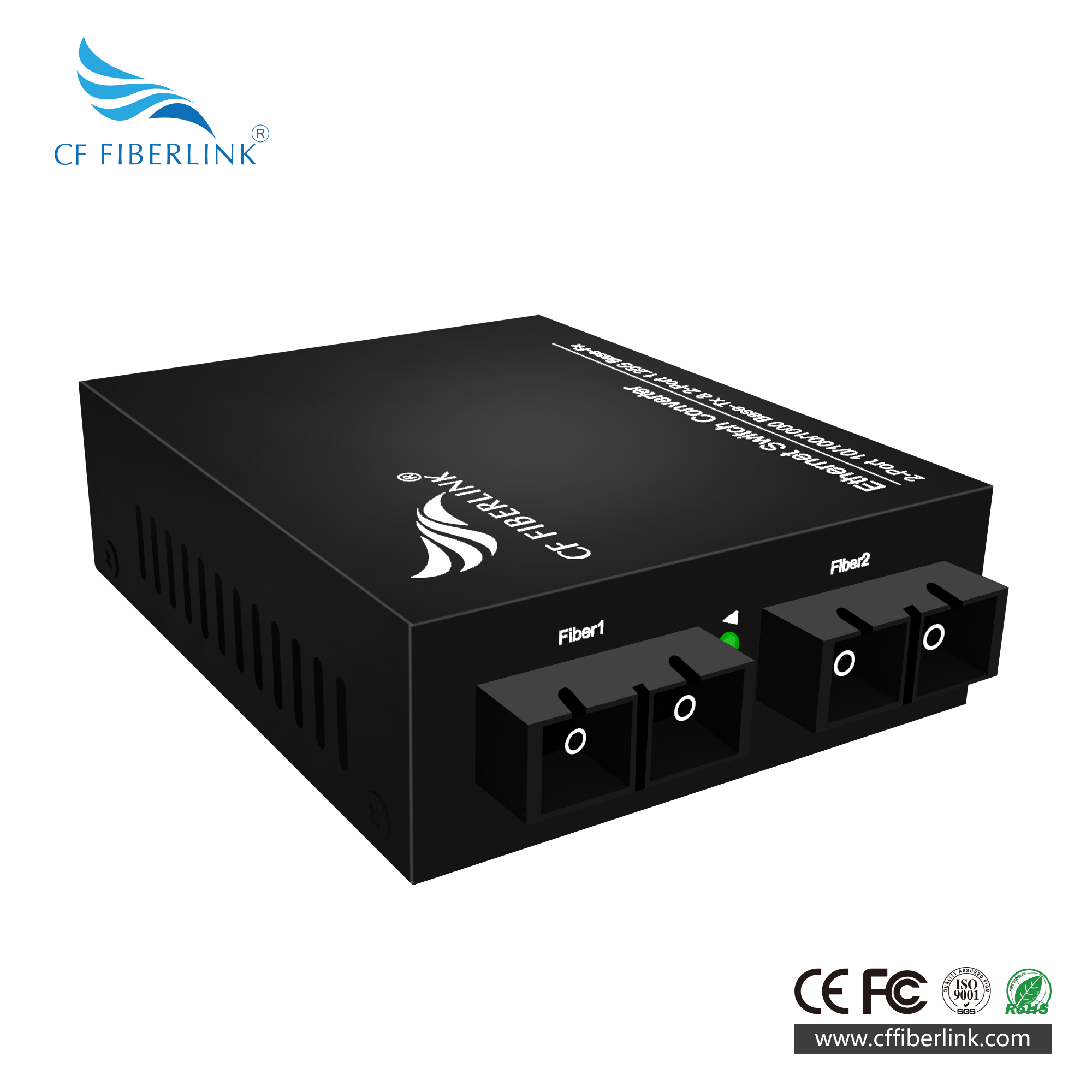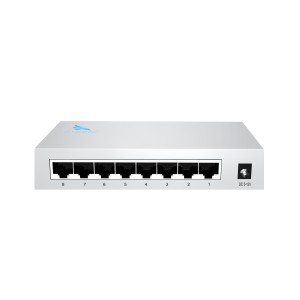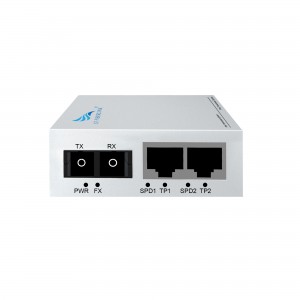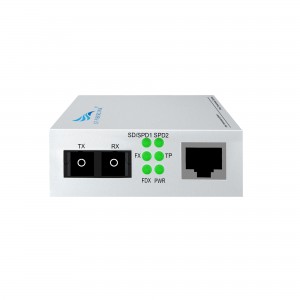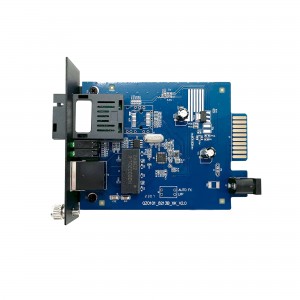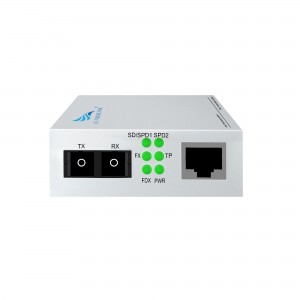4-port 10/100/1000M Media Converter (multi-mode Dual-fiber SC)
4-port 10/100/1000M Media Converter (multi-mode Dual-fiber SC)
Product Features:
Introducing Multimode Fiber Transceivers – Your Industrial Ethernet Fiber Conversion Solution!
Huizhou Changfei Optoelectronics Technology Co., Ltd. is proud to introduce Gigabit 2 Optical 2 Electrical Multimode Dual Fiber Optic Transceiver, a cutting-edge device specially designed to meet your industrial network needs. As a leading manufacturer of industrial intelligent managed switches and Ethernet solutions, we understand the importance of reliable, seamless communication in harsh environments.
Multimode fiber optic transceivers are used as industrial Ethernet fiber optic converters to provide safe and efficient conversion between different transmission media. It is designed for data transmission over dual-fiber connections, making it ideal for long-distance communication in various industrial applications.
Our transceivers feature advanced technology and high-speed transmission capabilities to ensure lightning-fast data transfer rates up to 1Gbps. With dual optical fiber and dual electrical interfaces, it can flexibly adapt to different network environments, so that it can be seamlessly integrated into your existing infrastructure.
One of the outstanding features of our product is its ease of use. Multimode fiber optic transceivers are designed with simplicity in mind, and the installation process is hassle-free. Just plug and play, and you’re ready to go! This user-friendly approach saves you time and effort, ensuring a smooth transition to a new fiber network.
In order to ensure the durability and service life of the transceiver, we have adopted an iron shell design. This rugged construction ensures immunity to harsh environmental elements, vibration and electromagnetic interference, making it suitable for deployment in the most challenging industrial environments.
In addition, the multimode fiber optic transceiver is designed to meet the IP30 protection level standard, which has excellent dust and solid object resistance. This feature makes it a reliable choice for applications in factories, power plants, transportation systems, and other harsh environments.
At Huizhou Changfei Optoelectronics Technology Co., Ltd., we pride ourselves on delivering high-quality networking solutions that meet the highest industry standards. Our multimode fiber optic transceivers are no exception! It provides unrivaled performance, reliability and versatility, ensuring seamless interaction between different network protocols.
As a professional manufacturer and industry leader, we strive to exceed our customers’ expectations in every possible way. We are committed to providing superior products and outstanding customer service to ensure your complete satisfaction with Multimode Fiber Optic Transceiver.
Don’t miss out on an opportunity to revolutionize your industrial network infrastructure. Choose Huizhou Changfei Optoelectronics Technology Co., Ltd. multimode fiber optic transceiver to experience the future of industrial Ethernet fiber conversion. Contact us today and let our experts help you find the perfect fiber solution for your specific needs. Together we will take your industrial network to new heights!
What This Product Does
◇ The CF-2022GMW-2 is a media converter designed to convert 1000BASE-X fiber to 1000Base-T copper media or vice versa. Designed under IEEE802.3ab 1000Base-T and IEEE802.3z1000Base-X standards, the CF-2022GMW-2 is designed for use with multi-mode fiber cable utilizing the SC-Type connector. The CF-2022GMW-2 supports shortwave laser specifications at full forward speed. It operates at 1310nm for transmitting and receiving data.
◇ Other features of this module include the ability to be used as a stand alone device (no chassis required), Auto MDI/MDI-X for TX port, and front panel status LEDs. The CF-2022GMW-2 will transmit at extended fiber optic distances utilizing multi-mode fiber up to 2 kilometers.
Other Features
◇ Besides, this media converter can be used as a standalone device (no rack required) or used with CF FIBERLINK’s CF-2U14 rack for auto MDI/MDI-X in TX port in which duplex mode is automatically negotiated.
Technical Parameter:
|
Model |
CF-2022GMW-2 | |
| Interface Characteristics | ||
|
Fixed Port |
2* 10/ 100/ 1000Base-T RJ45 port 2* 1000Base-X uplink SC fiber port |
|
|
Ethernet Port |
10/ 100/ 1000Base-T auto-sensing, full/half duplex MDI/MDI-X self-adaption |
|
|
Twisted Pair Transmission |
10BASE-T: Cat3,4,5 UTP(≤100 meter) 100BASE-T: Cat5e or later UTP(≤100 meter) 1000BASE-T : Cat5e or later UTP(≤100 meter) |
|
| Optical Port | The default optical module is multimode dual fiber 2km, SC port | |
| Wavelength/Distance | multimode: 850nm 0~550M,1310nm 0~2KM | |
| Chip Parameter | ||
| Network Protocol | IEEE802.3 10BASE-T, IEEE802.3i 10Base-T,
IEEE802.3u 100Base-TX, IEEE802.3u 100Base-FX, IEEE802.3x IEEE802.3ab 1000Base-T;IEEE802.3z 1000Base-X; |
|
|
Forwarding Mode |
Store and Forward(Full Wire Speed) |
|
|
Switching Capacity |
8Gbps |
|
|
Buffer Memory |
5.95Mpps | |
|
MAC |
2K | |
|
LED Indicator |
Fiber | Fiber1/Fiber2 |
| Data | 1X/2X (green) | |
| Power | PWR (green) | |
| Power | ||
| Working Voltage |
AC:100-240V |
|
|
Power Consumption |
Standby<1W, Full load<5W |
|
|
Power Supply |
DC:5V/2A industrial power supply |
|
| Lightning protection &Certification | ||
| Lightning protection | Lightning protection: 4KV 8/20us, Protection level: IP30 | |
| Certification | CCC;CE mark, commercial; CE/LVD EN60950;FCC Part 15 Class B; RoHS | |
| Physical Parameter | ||
| Operation TEMP | -20~+55°C;5%~90% RH Non condensing | |
| Storage TEMP |
-40~+85°C;5%~95% RH Non condensing |
|
| Dimension (L*W*H) | 88mm* 71mm*27mm | |
| Installation | Desktop | |
Product Size:
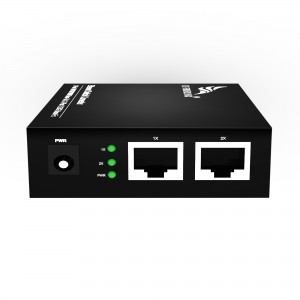
product application diagra:

How to choose a fiber optic transceiver?
Optical fiber transceivers break the 100-meter limitation of Ethernet cables in data transmission. Relying on high-performance switching chips and large-capacity caches, while truly achieving non-blocking transmission and switching performance, they also provide balanced traffic, isolation and conflict. Error detection and other functions ensure high security and stability during data transmission. Therefore, fiber optic transceiver products will still be an indispensable part of actual network construction for a long time. So, how should we choose fiber optic transceivers?
1. Port function test
Mainly test whether each port can work normally in the duplex state of 10Mbps, 100Mbps and half-duplex state. At the same time, it should be tested whether each port can automatically select the highest transmission speed and automatically match the transmission rate of other devices. This test can be included in other tests.
2. Compatibility test
It mainly tests the connection ability between the optical fiber transceiver and other devices compatible with Ethernet and Fast Ethernet (including network card, HUB, Switch, optical network card, and optical switch). The requirement must be able to support the connection of compatible products.
3. Cable connection characteristics
Test the fiber optic transceiver’s ability to support network cables. First, test the connection ability of Category 5 network cables with lengths of 100m and 10m, and test the connection ability of long Category 5 network cables (120m) of different brands. During the test, the optical port of the transceiver is required to have a connection capability of 10Mbps and a rate of 100Mbps, and the highest must be able to connect to a full-duplex 100Mbps without transmission errors. Category 3 twisted pair cables may not be tested. Subtests can be included in other tests.
4. Transmission characteristics (transmission loss rate of data packets of different lengths, transmission speed)
It mainly tests the packet loss rate when the optical fiber transceiver optical port transmits different data packets, and the connection speed under different connection rates. For the packet loss rate, you can use the test software provided by the network card to test the packet loss rate when the packet size is 64, 512, 1518, 128 (optional) and 1000 (optional) bytes under different connection rates. , the number of packet errors, the number of packets sent and received must be more than 2,000,000. Test transmission speed can use perform3, ping and other software.
5. The compatibility of the whole machine to the transmission network protocol
It mainly tests the compatibility of fiber optic transceivers to network protocols, which can be tested in Novell, Windows and other environments. The following low-level network protocols such as TCP/IP, IPX, NETBIOS, DHCP, etc. must be tested, and the protocols that need to be broadcast must be tested. Optical transceivers are required to support these protocols (VLAN, QOS, COS, etc.).
6. Indicator status test
Test whether the status of the indicator light is consistent with the description of the panel and the user manual, and whether it is consistent with the current status of the fiber optic transceiver.





